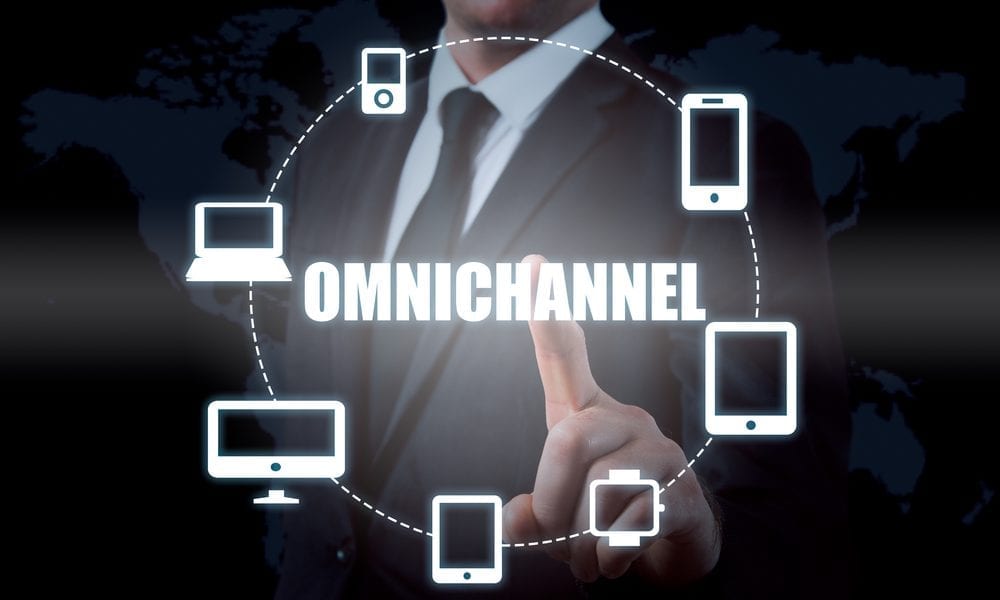Making Sense Of The New Omnichannel Experience

Table of contents:
As far as buzzwords go, one must tip their hat to the enduring power of “omnichannel.”
Take a time machine and travel back about 15 years, and one will hear merchants and consultants talking about providing consumers with omnichannel experiences that combine digital and physical parts of retail. Now, the word omnichannel more often refers to combining retail and payments — digital, physical or both — into a single, consistent, frictionless experience across channels. Consumers in 2019, after all, are prone to use not only mobile, but other forms of payment and commerce to complete transactions and build relationships with merchants and service providers.
Such was the view expressed in a recent PYMNTS discussion with Mike Braatz, chief marketing and product officer at ACI Worldwide. He spoke with Karen Webster about the evolution of the meaning of “omnichannel,” and what merchants need to do (and are doing) to fulfill those consumer demands and expectations — and to provide a real omnichannel experience by melding the digital and physical aspects of their businesses. Indeed, merchants are focused. They have shifted their attention from the EMV migration to omnichannel, he said.
Omnichannel Experience
“Omnichannel has evolved,” Braatz said. “Now, it’s about, ‘let’s make sure the information we have about shoppers is as integrated as possible’” into payments, inventory, delivery and other systems — and in a way that meets the increasing consumer demands for personalization, seamless transactions and, of course, data security. “Omnichannel is about a universal experience, which is really complex, and hits upon” a multitude of different technological and operational areas for merchants, he noted.
A big enabler of modern-day omnichannel is the ongoing deployment of mobile point-of-sale (mPOS) systems, Braatz told Webster, technology that is freeing parts of retail from the anchor of checkout and sales counters, and via which “sales associates are directly able to participate in the omnichannel experience.”
Another big factor in today’s race to provide those omnichannel experiences is payments. Tourists traveling back about 15 or 20 years in that time machine would be reminded that, compared with 2019, payments were still, as a whole, relatively boring and overlooked, even as eCommerce was getting off the ground. Now, things have changed dramatically. Payments must keep up with omnichannel efforts these days, Braatz said, or those efforts are almost sure to fail. That holds true whether those efforts are focused on stores, websites, mobile apps, connected vehicles or the emerging Internet of Things (IoT) ecosystem.
After all, he pointed out, “the future of omnichannel is going to be much more card-not-present-driven, and that will have implications on our payment systems.”
Omnichannel Challenges
Still, even the most enthusiastic merchant — that retailer eager to get omnichannel right for 2019 and beyond — faces massive challenges. Those physical aspects include legacy systems, and investments in terminals and other equipment, along with the time and money spent customizing those systems. Payments are also “very entrenched” in the card rails, and that will take some time to change — to introduce new payment features and tools that the current understanding of omnichannel would seem to require. However, one of the main goals is relatively simple, according to Braatz: less friction.
“How do you get the rewards and loyalty better integrated without five different apps or three different clicks to get to the experience?” he asked.
One way? The steady and growing trend of merchants moving to cloud infrastructures, which solves for some of those legacy problems, and can also serve to reduce the costs those retailers take on for payments and other services. The way Braatz told it, the cloud offers merchants the benefit of flexibility (which is vital, given how quickly consumers move from one thing to the next), as well as more payment options.
“They don’t get locked into certain terminals, acquirers or payment types,” he said.
Fraud Focus
That said, a move to the cloud — or, more generally, a move toward faster and even real-time payments in the service of the omnichannel experience — requires a deeper focus on fraud prevention and real-time fraud monitoring.
“Fraudsters are moving so fast, you need really good monitoring,” Braatz told Webster, mentioning buy online, pick up in-store (BOPIS) retail programs as an area that criminals are increasingly targeting. “You have to rely much more heavily on advanced analytics and machine learning” to stay ahead of those fraudsters in the current omnichannel environment.
That is certainly a daunting — and potentially expensive — challenge, but the good news is that merchants as a whole realize they must embrace the newer meaning of omnichannel. In fact, he noted, the conversation has recently shifted from EMV adaptation to getting omnichannel done right (and significant progress toward that goal has been seen in fashion, fuel and convenience stores, and QSRs).
The main reason for all that is, obviously, to increase revenue and customer loyalty, but long-term cost reductions (such as those provided by the cloud) and other factors are also playing a role. No matter the motivations, though, the 2019 version of omnichannel retail is dependent upon payments.
Payments, Braatz said, are “the last mile” when it comes to omnichannel. “It’s really important to get that right.”
Source: PYMNTS.com




